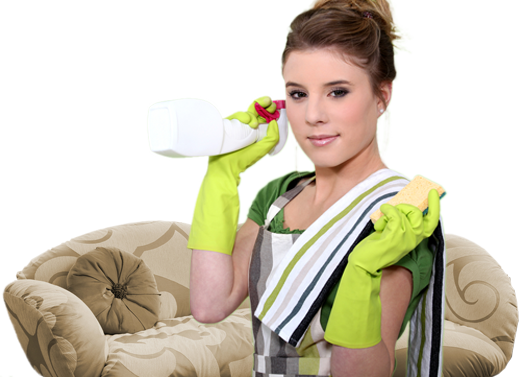5 Easy Steps to a Mold-Free Bathroom Sanctuary
Posted on 25/06/2025
5 Easy Steps to a Mold-Free Bathroom Sanctuary
Maintaining a mold-free bathroom sanctuary is crucial for your health and home hygiene. Mold is more than just an eyesore - it can trigger respiratory issues, allergies, and damage surfaces. This comprehensive guide reveals five simple yet effective steps to transform your bathroom into a fresh, clean, and mold-resistant haven.
Why Every Home Needs a Mold-Free Bathroom
If you've noticed unpleasant odors, dark stains around the shower, or even felt persistent humidity in your bathroom, you're likely dealing with the early signs of mold. Besides undermining your bathroom's appearance, mold endangers your family's health. That's why it's essential to understand how to keep the bathroom mold-free and always inviting.
- Health risks: Mold spores can cause allergies, asthma attacks, and respiratory infections.
- Structural damage: Persistent mold can rot wood, stain tiles, and mess with grout and caulking.
- Unpleasant odors: Moldy bathrooms retain musty smells that no amount of air freshener can mask.
- Decreased property value: Bathrooms plagued by mold are red flags for potential buyers or tenants.
Learning how to create a sanctuary free from mold is a smart investment in both your health and home.

Step 1: Maximize Bathroom Ventilation
Proper ventilation is your first line of defense in maintaining a mold-free bathroom sanctuary. Mold thrives in warm, humid spaces with little air movement. Immediately after showers or baths, moist air gets trapped, creating an ideal breeding ground for spores. Here's how to improve airflow and keep dampness in check:
- Install a quality exhaust fan: Make sure it's powerful enough for your bathroom's size and use it during and after showers for at least 30 minutes.
- Open windows: If possible, crack a window while bathing to let fresh air circulate.
- Leave the door open: When the bathroom's not in use, keeping the door ajar helps dissipate moisture.
- Clean vents and fans regularly: Dust and grime lower efficiency, so clean intake grills and blades every two months.
- Add a portable dehumidifier: In very humid climates or windowless bathrooms, use a small dehumidifier to reduce overall moisture.
Expert tip: Check your exhaust fan's CFM (cubic feet per minute) rating. Optimize placement for maximum coverage and efficiency.
Ventilation Mistakes to Avoid
- Relying solely on air fresheners: These do not reduce humidity and give a false sense of cleanliness.
- Blocking vents: Avoid clutter or hanging towels directly over exhaust covers.
Step 2: Control Humidity Levels
Controlling humidity is fundamental in achieving a mold-free bathroom environment. Mold starts forming when humidity surpasses 60%. Maintaining an optimal range of 30-50% effectively starves mold of its preferred conditions.
- Invest in a humidity meter: These affordable devices (hygrometers) allow constant monitoring.
- Use moisture-absorbing products: Place silica gel packets or desiccant canisters in wardrobe corners, cabinets, or under-sink spaces.
- Dry wet surfaces immediately: Wipe down sinks, shower doors, walls, and tiles after use.
Proactive humidity control isn't just about gadgets--it's about building small habits into your daily routine.
Quick Humidity Reduction Tips
- Hang towels and bath mats outside: This prevents them from trapping and releasing excess moisture inside the bathroom.
- Fix leaks promptly: Even tiny drips increase ambient humidity and nurture hidden mold.
- Seal grout and caulk annually: This provides another layer of defense against water infiltration and buildup.
Did you know? Bacteria and mold can double in just 24-48 hours on wet surfaces. Every drop matters when crafting your mold-free bathroom haven!
Step 3: Clean Regularly with Mold-Preventive Products
Regular cleaning is the heart of a mold-resistant bathroom sanctuary. It's not just about visible surfaces--mold can colonize under shampoo bottles, inside grout lines, and behind fixtures. Natural and commercial mold-removing cleaners help stop spores in their tracks.
Essential Bathroom Cleaning Routine
- Scrub tiles and grout weekly: Use a stiff brush and specialized anti-mold solutions. Vinegar and baking soda are excellent DIY options for non-acidic surfaces.
- Disinfect all high-touch areas: Faucets, handles, light switches, and door knobs accumulate both grime and microscopic mold spores.
- Wash shower curtains or liners monthly: Mold quickly spreads through porous fabrics. Choose machine-washable, mildew-resistant materials for lasting cleanliness.
- Soak bathmats in hot water: This kills lingering spores that basic machine cycles might leave behind.
Best Mold-Remover Products for Bathrooms
- Hydrogen peroxide spray: 3% solution efficiently kills mold on contact.
- White vinegar: An all-natural, eco-friendly mildew buster for tiles and glass.
- Commercial anti-mold sprays: Check labels for bathroom safety; always use with good ventilation.
Note: Avoid mixing bleach and ammonia. The combination releases toxic fumes and can damage surfaces and health.
Step 4: Eliminate Mold-Friendly Materials and Clutter
A central part of creating a mold-free bathroom sanctuary is streamlining what you keep inside. Mold loves hiding in and feeding off organic material such as cotton, cardboard, and wood. Clutter not only accumulates dust and moisture but also gives spores a place to thrive unnoticed.
- Upgrade to mildew-resistant paint: Look for products specifically formulated for bathrooms to halt mold before it starts.
- Avoid decorative rugs and fabric storage: These are notorious for trapping moisture and are difficult to clean thoroughly.
- Replace wooden shelves with glass or plastic: Non-porous materials dry faster and don't offer nutrients for mildew.
- Store bath products properly: Use caddies with drainage holes and avoid letting bottles sit in puddles.
- Keep surfaces clear: Less clutter on counters means fewer hiding spots for mold and quicker cleaning for you.
Spotting and Removing Hidden Mold
It's easy to miss the mold that lurks behind toilets, under sinks, or inside exhaust fan ducts. Check these less-visible spots monthly and clean promptly if you spot any discoloration, fuzzy patches, or persistent smells.
Decluttering for Cleanliness
- Recycle empty containers right away: They trap water and serve as a breeding ground for spores.
- Organize with easy-to-move bins: This makes it easier to wipe down shelves and avoid mold buildup behind products.
Transform your bathroom by adopting a minimalist approach. Fewer items and smarter choices mean fewer places for mold to hide and a fresher, cleaner appearance overall.
Step 5: Inspect and Maintain Bathroom Fixtures
Even with the best mold prevention strategies, neglected fixtures can sabotage your mold-free bathroom goals. Small leaks around the sink, tub, or toilet allow water to sneak into crevices and trigger mold outbreaks.
- Check for leaks at least monthly: Use a flashlight to inspect under the sink, behind the toilet, and around the tub. Address any sign of moisture promptly.
- Replace old caulking and grout: Cracked, peeling or missing sections invite water intrusion and mold growth. Reapply as needed for a solid seal.
- Test and maintain toilet seals: Wet floors around the toilet could mean a faulty wax ring--a quick fix that can prevent major mold headaches.
- Inspect for soft spots or discoloration: Floor and wall damage require immediate action and sometimes professional intervention to remediate hidden mold.
DIY vs. Professional Help: Know When to Call Experts
- Visible mold larger than 10 square feet: Significant infestations (such as large black patches behind walls) should be handled by professionals to ensure complete removal and prevent regrowth.
- Frequent leaks despite repairs: Ongoing moisture issues may signal hidden plumbing faults or structural damage that require expert assessment.
Stay ahead of the problem: Routine maintenance maximizes the life of your fixtures and preserves the integrity of your mold-free bathroom sanctuary.
Creating Your Mold-Free Bathroom Sanctuary: Final Thoughts
Achieving a pristine, mold-free bathroom sanctuary is about consistency and smart choices. From improving ventilation and lowering humidity, to mindful cleaning and maintenance, these five steps are easy to implement and guarantee long-term cleanliness and peace of mind.
- Act proactively rather than reactively: Once mold takes root, it's much harder to eliminate than prevent.
- Make small changes part of your daily routine: A few minutes each day maintains a healthy and inviting bathroom space.
- Stay vigilant with regular inspections: Early detection helps you avoid costly repairs and health risks down the road.
Enjoy the confidence and comfort that come from a mold-free, shimmering bathroom sanctuary. With these five easy steps, you're equipped to keep mold in check and safeguard your family's wellbeing.
Ready for a new era of bathroom cleanliness? Start today, and make your mold-free sanctuary a reality!

Frequently Asked Questions About Mold-Free Bathrooms
What's the best cleaning schedule to prevent bathroom mold?
Aim for a deep clean of tiles, grout, and fixtures once a week, with quick daily touch-ups after showers to wipe surfaces and dry corners.
Are natural remedies effective for mold prevention?
Yes! White vinegar, baking soda, and hydrogen peroxide are effective for daily mildew prevention. For persistent mold, commercial solutions or professional help may be necessary.
How can I tell if my bathroom's humidity is too high?
Sticky surfaces, foggy mirrors, or a humidity reading above 60% signal excess moisture. Adding a humidity sensor is an easy way to monitor and manage levels.



